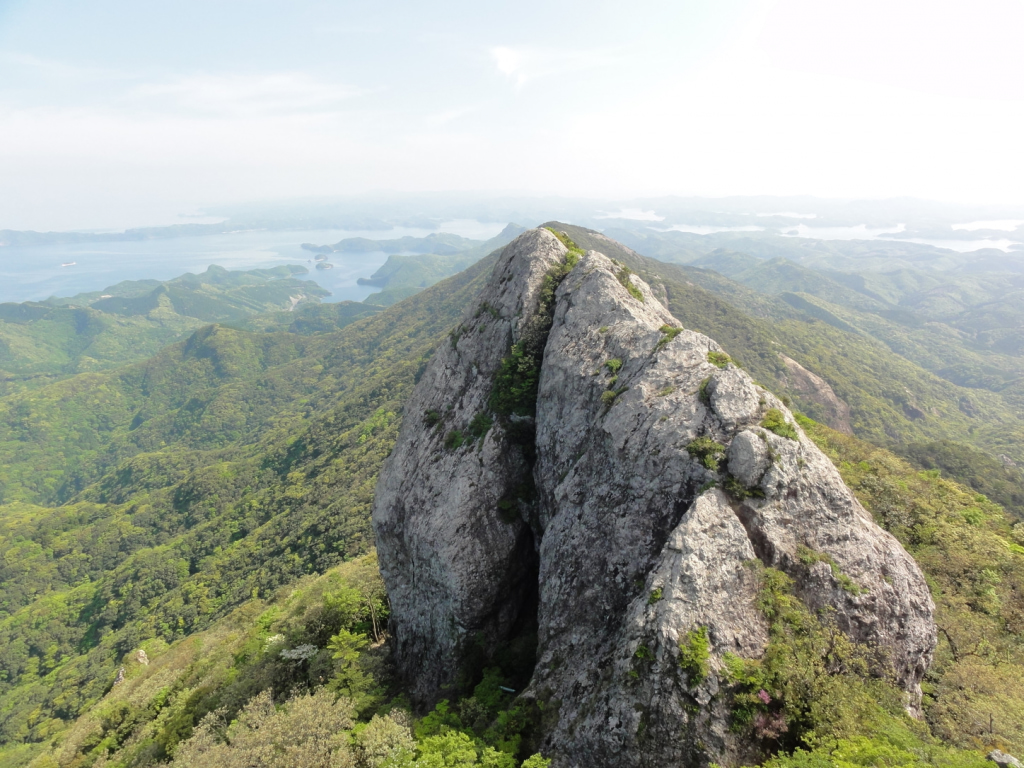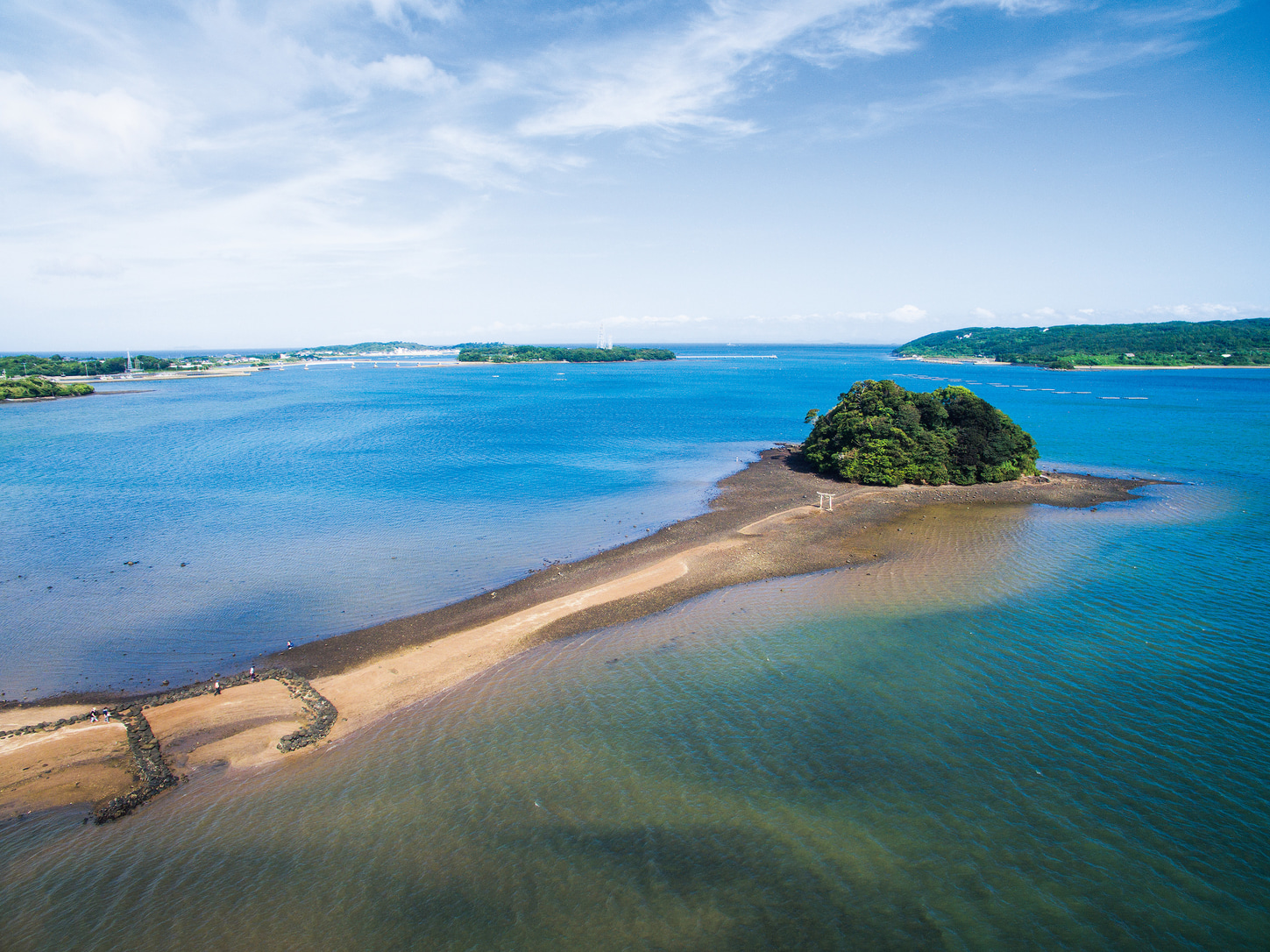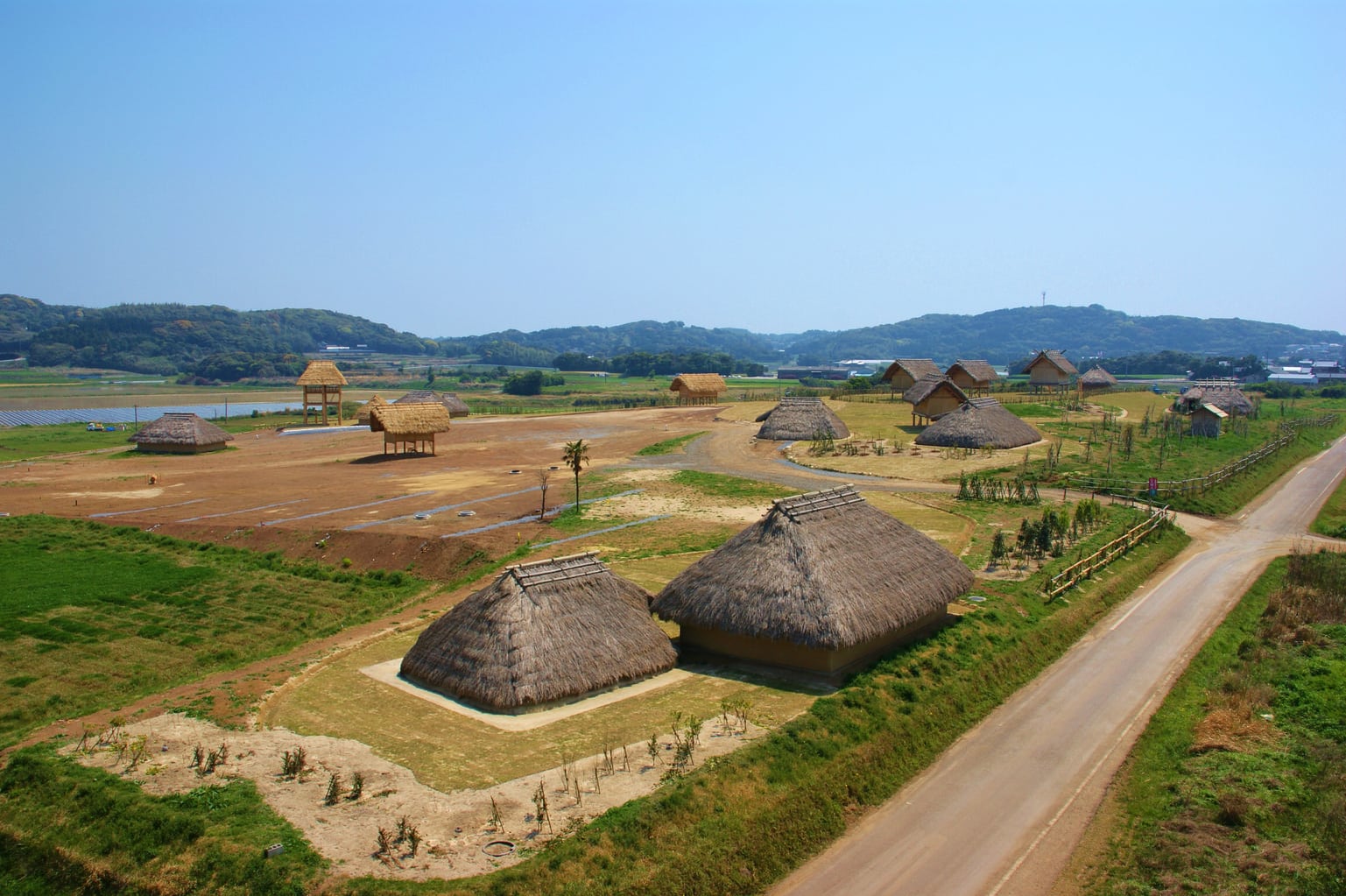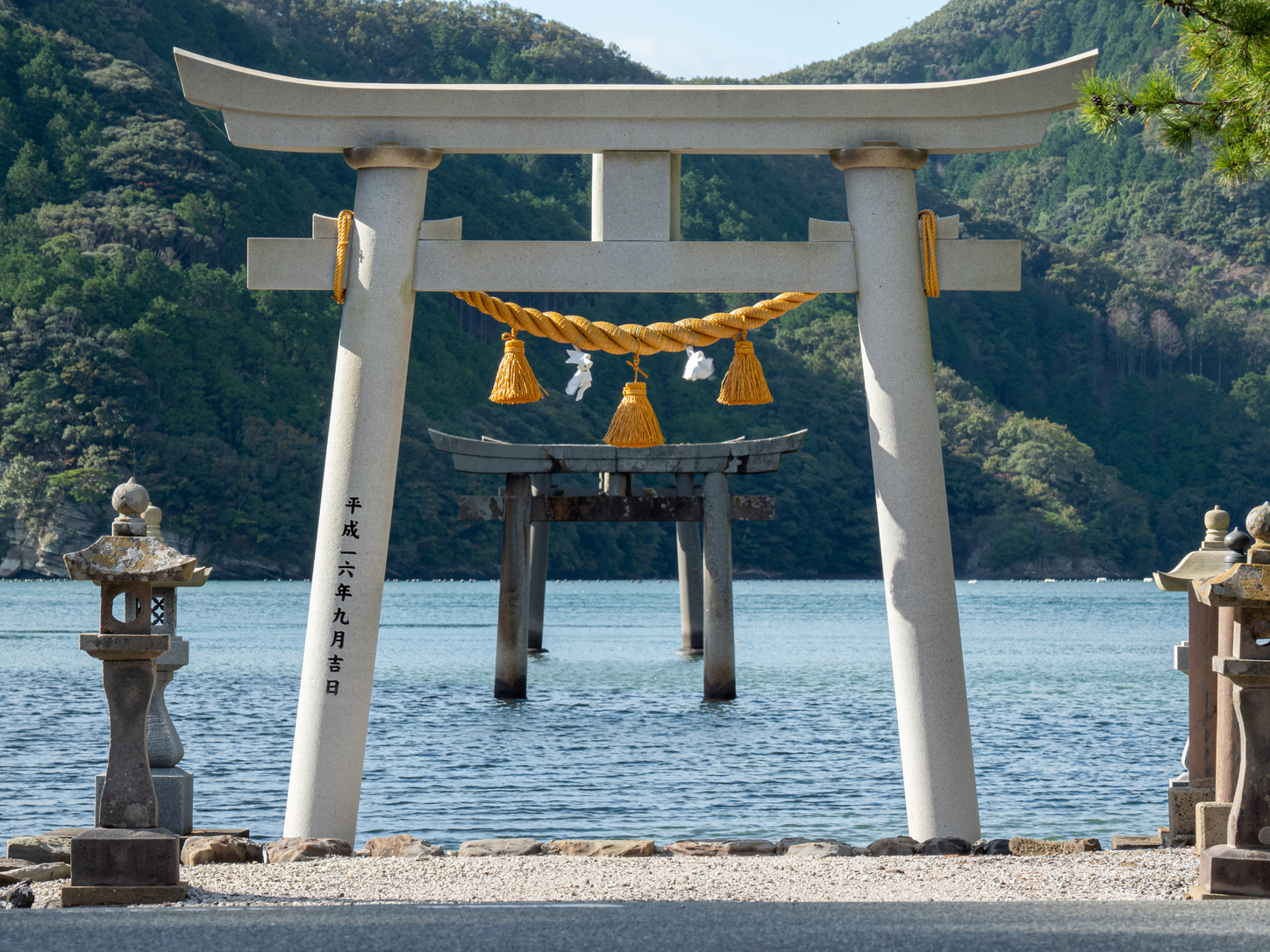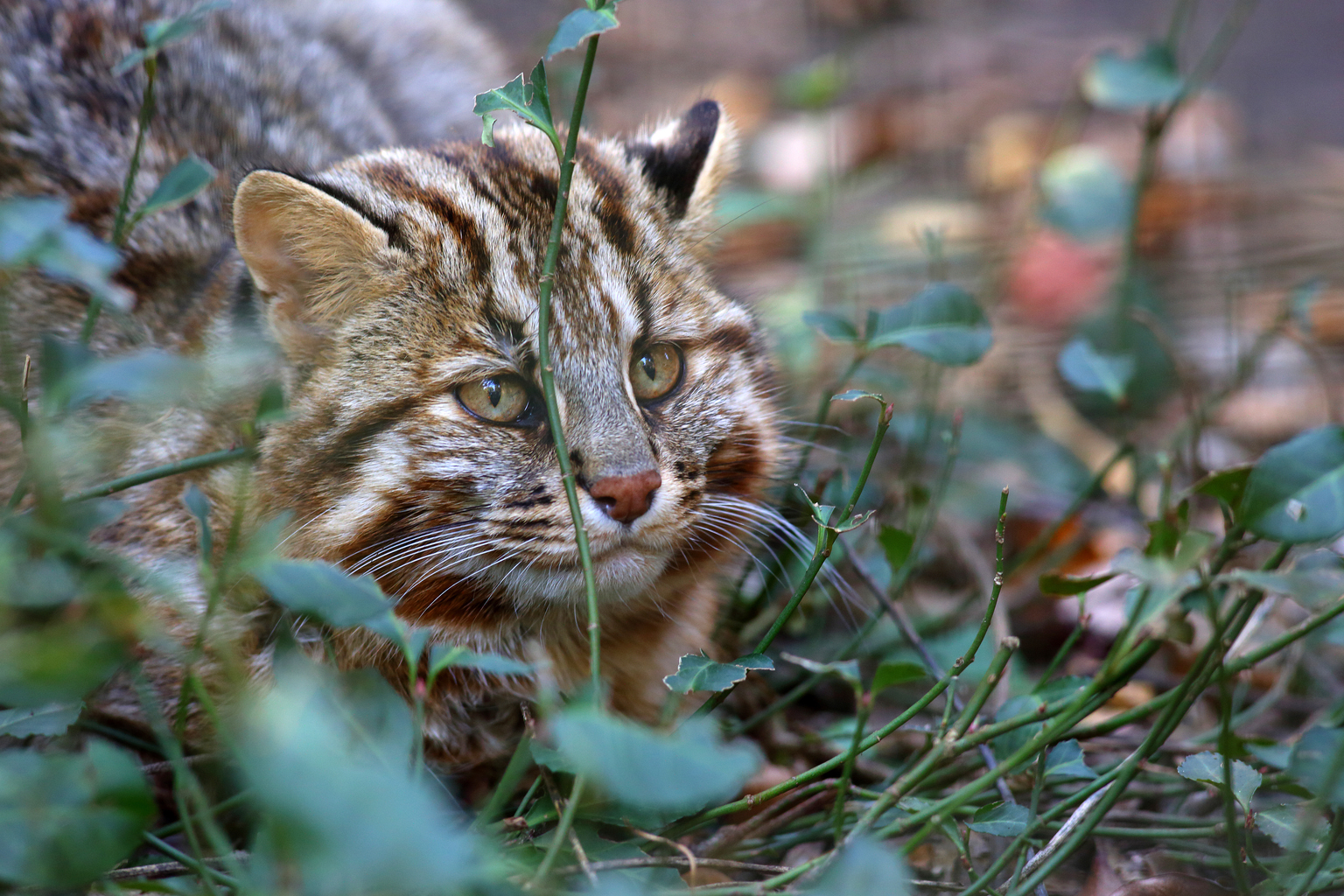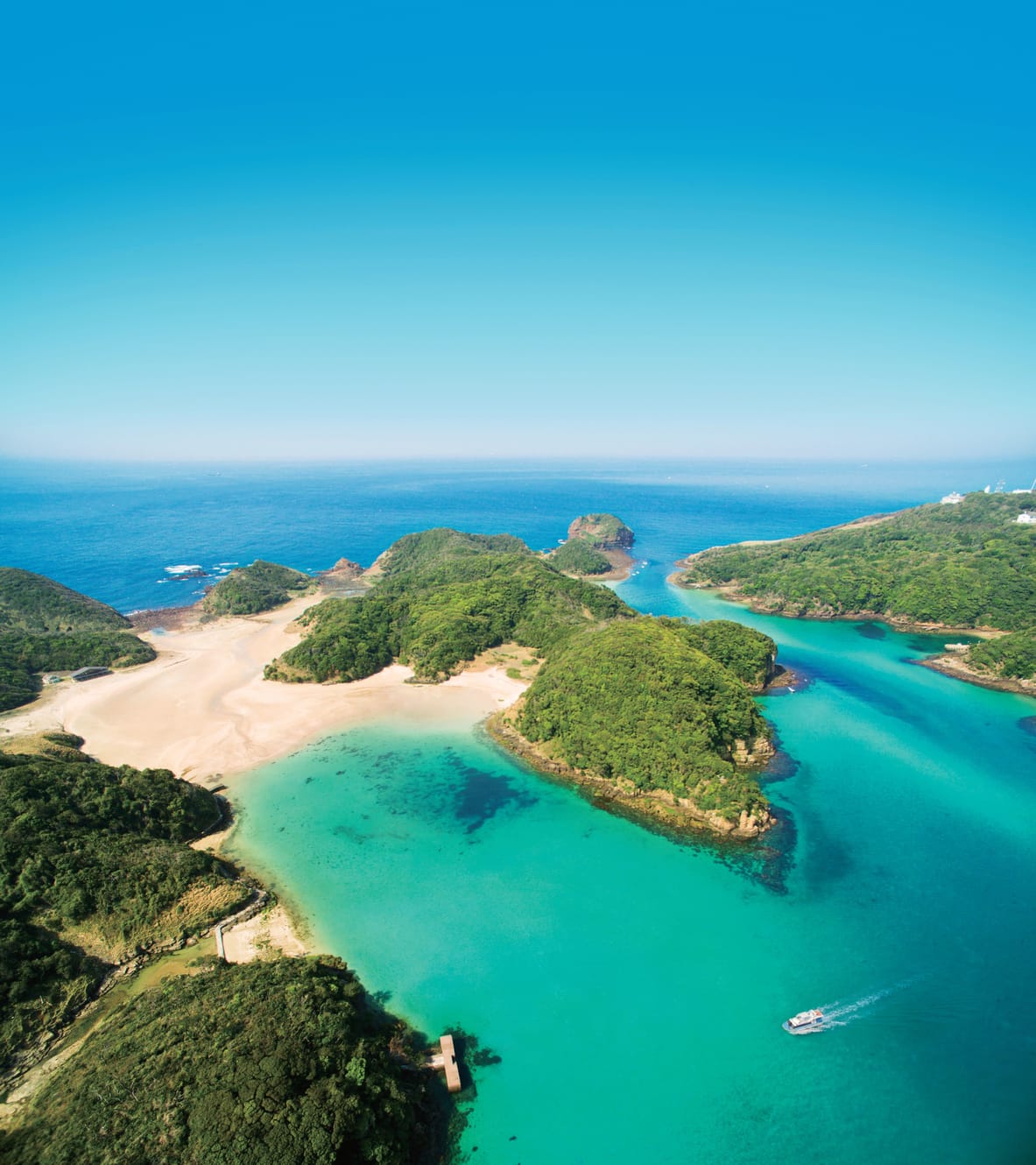Iki Island, around 50 kilometers from the Kyushu coast, is frequently called “heavenly” or “sacred.” When you go, you will see that much is true, but for several reasons. More literally, there are the 150 registered shrines (though some estimates exceed 1,000) – a high concentration of deities. Likewise there are the vast turquoise beaches, stretches of submerged sand and towering coastal crags which can only be described as sublime. Often what makes the sights of Iki so stirring is a harmony between religious structures and nature.
Spiritual Waters
Take Kojima Shrine, which can only be accessed during low tide. For a few hours before and after the tide wanes, a tiny isthmus emerges and you can walk to the shrine, unlike any other: A torii gate stands before a green mound that recalls Castle in the Sky. As the island is thought to be sacred, it is prohibited to take anything (including a single branch or leaf) from the island. Kojima is a short drive from Ashibe Port.
With its vibrant water, white-sand beach and unique topology, the uninhabited Tatsunoshima Island is one of the most popular spots in Iki. Located a couple kilometers from Katsumoto Harbor, regular boat tours (¥1,500 for adults) occur every one to two hours from March to November. The area is dotted with cliffs, caves and stone arches, including “Snake Valley,” the tall chasm nestled between two cliffs. Tatsunoshima is perfect for thrillseekers and conventional vacationers alike: You may trek along the crags or simply relax on the beach.
Historical Discoveries
Iki has been inhabited since prehistory, with artifacts as far back as the Jomon Period having been discovered there. Subsequently, in the third-century Chinese historical text Wei zhi (in Japanese, Gishi Wajinden), it mentioned a certain “Ikikoku,” a kingdom which served as a site of trade between Japan and the Asian mainland. Nowadays, you will find a former wharf of this kingdom at Harunotsuji Archaeological Site, close to Ashibe Port – the ruins were built with engineering techniques from China, and artifacts found on site include Chinese coins and earthenware from the Korean peninsula.
Spirits of Another Kind
Iki Island is not all sightseeing. It is also the birthplace of barley shochu, and was awarded by the World Trade Organization with a Geographical Indication for its liquor production, a tradition derived from cultural exchange with China. There are seven distilleries in the islands, including the nearly century-old Omoya Shuzo and Ikinokura, the actual developer of barley shochu, distinct for its use of rice malt. For lovers of sake and shochu, a factory tour and tasting is a must-try.
Tsushima: More Than Fun and Games
Tsushima is another “Border Island” – one of the first places in Japan to know of a world beyond. You might recognize the name from the Play Station 4 game Ghost of Tsushima, which actually touches on the island’s role as a defensive front against the Mongols in the 13th century. Even before the Mongol invasion, Tsushima housed border guards against the Baekje Kingdom and diplomats to Tang China. Considering this longstanding intermediary position – the island is actually closer to South Korea than it is to Japan’s mainland – the culture continues to ripple with influences from the Korean Peninsula. Like Iki, Tsushima is home not only to a rich and distinctive culture, but also some of the most stunning prospects in Japan.
Watatsumi Shrine, known as the “sea shrine” with two of its torii gates rising above the water, has the ghostly atmosphere which likely inspired the visuals of Ghost of Tsushima. Legend has it that this monument was once the palace of Ryujin, a sea god in the shape of a dragon. Another sacred site is Mount Shiratake. The rocky and somewhat precipitous Shiratake trail is more suited to intermediate and advanced hikers, but it gives way to a great panorama of the scattered coastline, Mount Ariake, and even the peaks of Korea (in clear weather). While the home stretch of the hike is quite steep, much of your climb is through a placid, mysterious oak forest. Its unique geology (one feature is a pair of peaks of mottled quartz) and vegetation (the autumn and spring flowers are particularly beautiful) are sure to enchant nature lovers.
The Native Natural Wonders
For a different kind of view, reserve a half- or full day to take a guided kayak tour around Tsushima. With Tsushima EcoTour, you can rent single or double kayaks and paddle through Asou Bay. As a great majority of the island is mountainous, the waves are gentle and surrounded by towering green peaks. It seems that sea level is the optimal place to feel one with nature: Not only will the tour introduce you to the mountain castles of antiquity, but you will also enjoy scenery that’s gone virtually unchanged for a millennium. As you flit around various uninhabited islands, you can even try your hand at snorkeling. This tour is fit for all levels; the aim is not to teach sea-kayaking but to immerse you in the nature and history of Tsushima.
As the westernmost point in Japan, the island is also home to unique fauna. You can see the endangered Tsushima leopard cat, or Tsushima yamaneko, at the Wildlife Conservation Center, where you can learn about the native ecology and endangerment status of the creature.
Island Barbecue
Consider ending your day with Ishiyaki, a Nagasaki barbecue method where fish and veggies are grilled on a white-hot stone. This method was originally used by fishermen and divers to warm themselves on land. Now, at such spots as Maruya Hotel and Shimamoto, you receive huge slabs of quartzite (resistant to cracking when heated) and equally impressive seafood spreads for cooking. No need to oil the stone; the oil from the fish soaks into the rock, making the product even more flavorful and fluffy. Make sure to make a reservation ahead of time at Shimamoto; and the Ishiyaki course at Maruya Hotel is typically for guests. Diners marvel at the “wilderness” feel of this cooking method. You could say this kind of atmosphere washes over all of the Border Islands.
Sponsored Post

